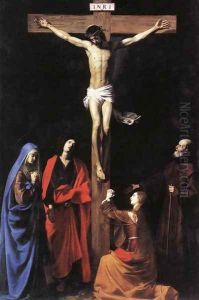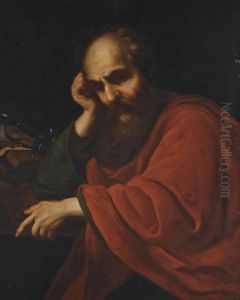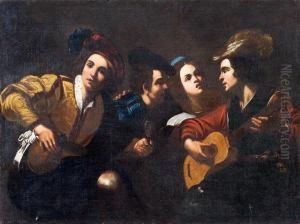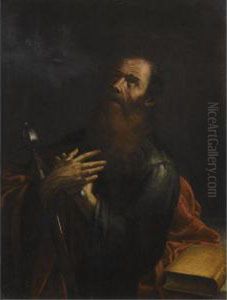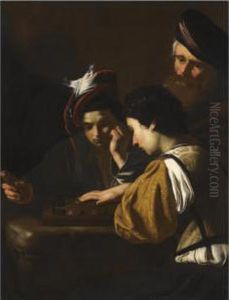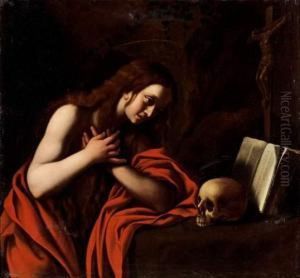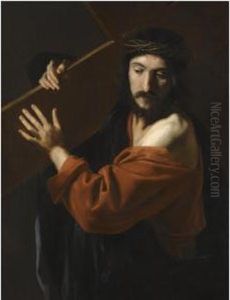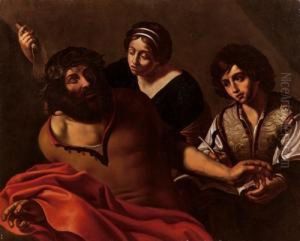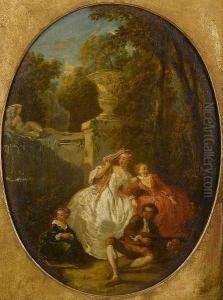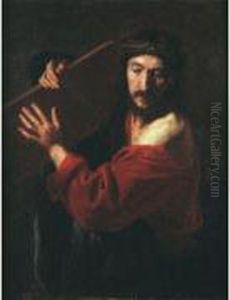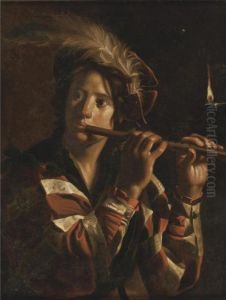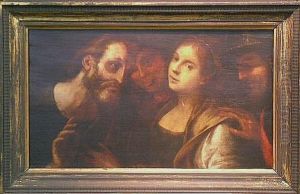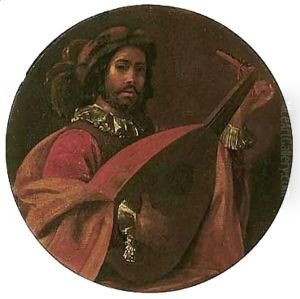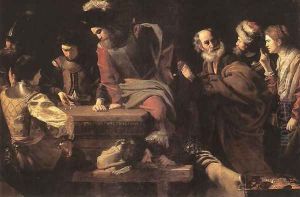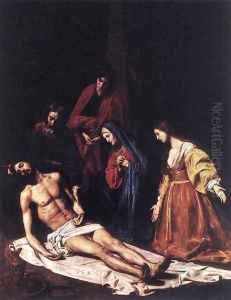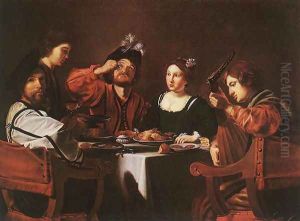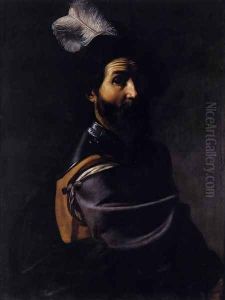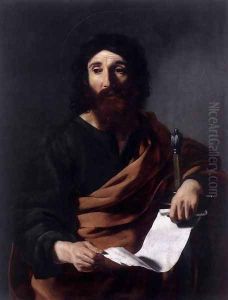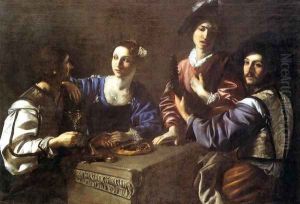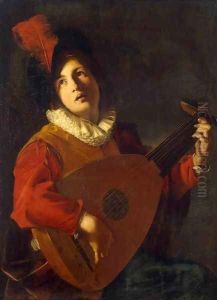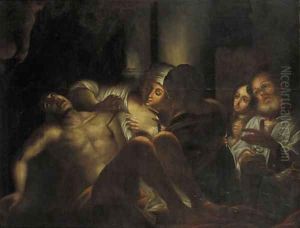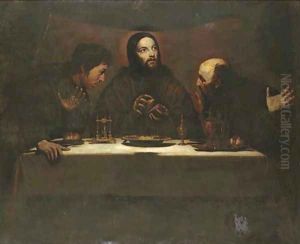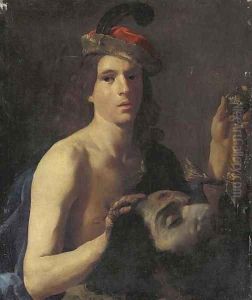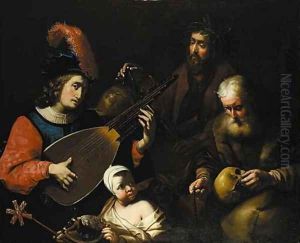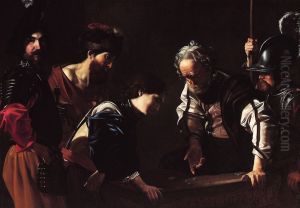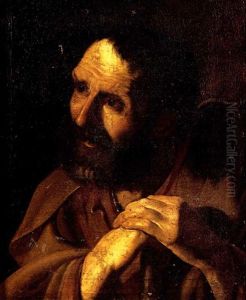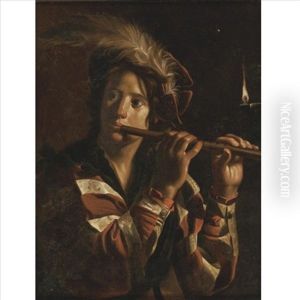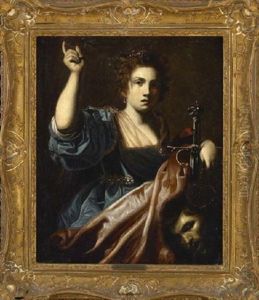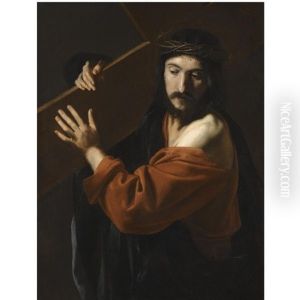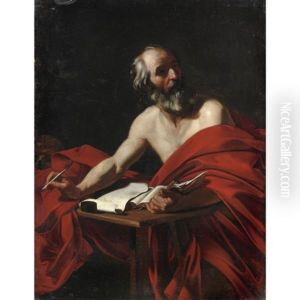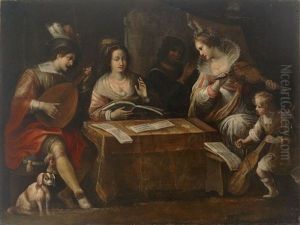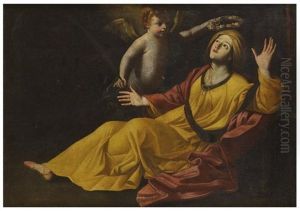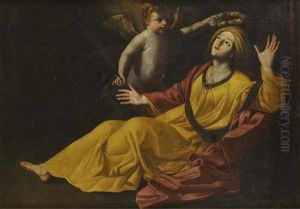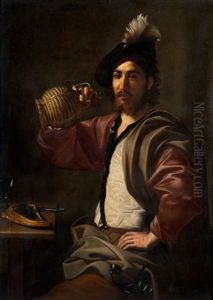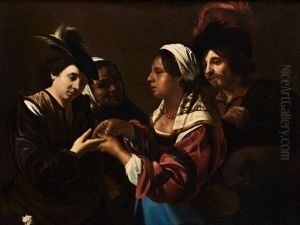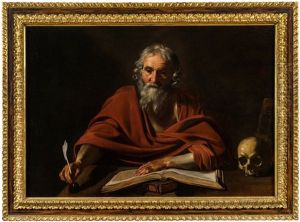Nicolas Tournier Paintings
Nicolas Tournier was a French Baroque painter, born in Montbéliard in 1590. He is known for his dark, dramatic works and his skill in depicting the effects of light. Tournier was initially trained in the workshop of a local artist in his hometown. His talent soon took him to Rome, which was a center for artistic learning and practice during the early 17th century. There, he was influenced by the work of Caravaggio, whose use of chiaroscuro and realistic, emotionally charged figures became an important element in Tournier's own style.
Tournier spent a significant period in Rome, and it was there that he developed his characteristic style, marked by strong contrasts between light and dark, a technique known as tenebrism. His subjects often included religious themes, such as scenes from the life of Christ, the apostles, and the saints. He also painted genre scenes and still lifes, although these were less common in his body of work.
After his time in Italy, Tournier returned to France around 1626 and settled in Toulouse. His style had matured, and he became a leading artist in the city, receiving commissions from religious institutions and members of the local elite. Among his notable works from this period are 'The Denial of Saint Peter' and 'The Crowning with Thorns'. These paintings demonstrate Tournier's ability to convey complex emotions and his mastery of light and shadow.
Unfortunately, Tournier's life and career were cut short when he died in 1639. Despite his relatively brief career, his work had a lasting impact on the development of French painting and the Baroque style. His influence can be seen in the works of later artists who adopted his dramatic lighting and strong compositions. Today, Nicolas Tournier is remembered as a significant figure in the French Baroque movement, and his paintings are held in numerous art collections and museums around the world.
